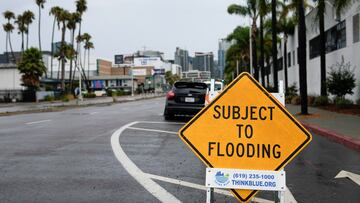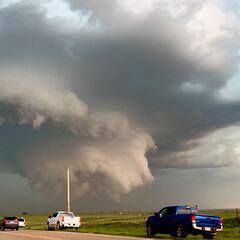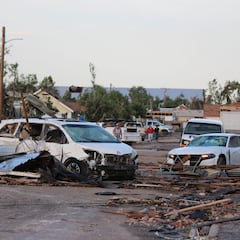What is the difference between a tropical storm and a hurricane?
Every year the US is battered by numerous storms that blow in off the ocean. The speed of a tempest’s winds determine how it is categorized.


While the National Oceanic and Atmospheric Administration (NOAA) sets the hurricane season between defined dates for each of the basins where they can form, the powerful storms can occur at any time of the year. At the beginning of the 2023 season, NOAA had predicted normal activity. However, the meteorological agency updated their forecast to above normal due to record-warm sea surface temperatures and atmospheric conditions.
Not all storms will reach the damage potential of hurricanes however. These are tropical storms and, although they are the smaller siblings of hurricanes, they cause less significant hurt.
A tropical storm is declared at at least 39 mph. They are the intermediate stage on the way to a hurricane, though not every tropical storm will grow into a hurricane. The NOAA thinks there could be as many as 21 named storms this year, 6-11 of which could become hurricanes.
Tropical Storm #Bret has formed in the Tropical Central Atlantic with maximum sustained winds of 40mph.
— National Hurricane Center (@NHC_Atlantic) June 19, 2023
Pictured below is a geocolor satellite image of Bret on the left with the earliest reasonable time of arrival of tropical-storm-force winds along Bret's forecast track on the… pic.twitter.com/16nwOTZpKf
In contrast, hurricanes are plenty more fearsome. Winds of a category 1 hurricanes range from 74 to 95 mph to more than 157 mph at category 5. The speed of the wind can cause a storm surge, which is when a wall of sea water is pushed inland, as well as heavy rain.
Why the difference?
Related stories
Functionally, the two are the same. They are both born from the same conditions, it is merely the speed of the tempest’s winds which determines the name. As soon as a tropical storm breaches the 74 mph barrier it is called a hurricane.
What about tornadoes?
Tornadoes are similar to hurricanes though their scale tends to be much smaller. Tornadoes are usually less than 3 miles wide, while hurricanes can be as large as 1,000 miles wide. Furthermore, hurricanes tend to form over the sea, while tornadoes form over land.Tornadoes are produced by strong vertical wind as well as high horizontal temperature changes while hurricanes utilize weak vertical wind alongside low horizontal changes in atmospheric temperature. The strongest tornadoes can have wind speeds over 300 mph, but hurricanes rarely breach the 200 mph barrier.

